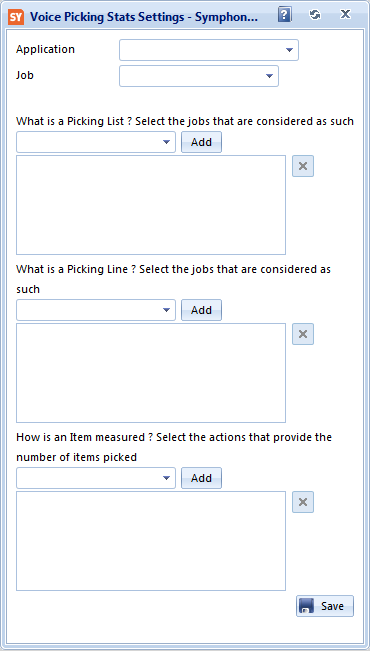Voice Picking Stats
In logistics, picking refers to the task of selecting an item for shipment from a warehouse or another similar storing place.
A voice application can be used to help the workers find the items to be shipped, and to let them know how many units of it are needed.
The usual process for a voice picking application works in the following way:
- Software tells the worker the location of the item to be picked.
- The worker confirms the location.
- Software tells the worker the item to be picked.
- The worker confirms the item to be picked.
- Software tells the worker the ammount of units of said item to be picked.
- The worker confirms the ammount of units picked.
A Picking line consists of a single succesion of those 6 actions, and many picking lines are grouped
together into a Picking List.
On this page we will gather and display information related to the voice picking,
such as the number of items picked, and the average time it took an operator to finish a single picking line or an action,
for the purpose of measuring work performance or errors in the voice application.
Defininig a Picking Line and Picking List
To retrieve information about the behaviour of the an Operator the Symphony client generates the
Actions Log which is uploaded regularly to the web console in order to be processed.
These files contains the sequence of voice actions performed by each operator but they don't have meaning at all and
doesn't provide enough information as a hole.
In order to recognise what is a Picking Line and a Picking List, two jobs
must be created, those two jobs will help Symphony to recognise valid sequence of actions and ultimately, generate
the report displayed in this page.
Preparing a report
In order to retrieve the statistics, we will have to prepare the report first. But, before the report can be prepared,
the following steps must be completed:
- Create a Picking Line job, using the example explained in this page, this job should be an
Repeatable Action Graph .
- Create a Picking List job, using the example explained in this page, this job should be an
Job Sequence that should include
the Picking List previously created.
- Assign the Picking List job to a previously created Voice Application
To start preparing a report, we click on the
Prepare Report
button, and the following window will be displayed:

On this page the user will be asked to specify the following information:
- Application: The Picking List was assigned to an Application, select it from here.
- Job: We must select one job of the list of assigned jobs to the previously selected application. Select the Picking List
job or the job that contains the Picking List job.
- Picking Lists: One or more jobs that are considered to be Picking Lists. In some cases a Picking List can be defined
in one or multiple forms, any of those forms can be selected and added to the report.
- Picking Lines: One or more jobs that are considered to be Picking Lines. Similar to Picking Lists, Picking Lines
can be defined in one or multiple forms. They can be added to the report as well.
- Meaurement of Items: One or more actions that belong to the Picking Line Job that are executed by the
operator to measure the amount of items he picks.
Once all the values are set, we click on the
Save button.
Generating a report
The information retrieved is based on the behaviour of the Operators, to generate the report we need to select at least one Operator.
Afterwards, we click on the
Generate Report
button and the statistics will be shown in a grid with the following information columns:
- Login ID: The 4 digit number used by the Operator to log into a Voice application.
- First Name: First name of the Operator.
- Last Name: Last name of the Operator.
- Picking Lists: Number of Picking Lists completed by the operator.
- Picking Lines: Number of Picking Lines completed by the operator.
- Items Picked: Total of items picked.
- Picking List Times: Maximum, Minimum and Average time in which the operator completed a Picking List.
- Picking Line Times: Maximum, Minimum and Average time in which the operator completed a Picking List.
- Items Picked: Maximum, Minimum and Average ammount of items picked by the operator.
